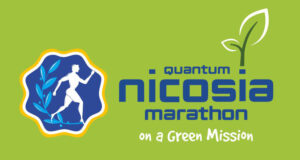


Cyprus’ Natural Environment
Despite being a small island, Cyprus is endowed with amazing natural beauty and natural heritage. The island owes its rich biodiversity to its geographical position, defining its geological evolution, its intense Mediterranean climate and its centuries-long isolation from the neighboring land areas.
It is also characterised by its diverse flora and fauna and a large number of endemic species, such as plants and animals found only in Cyprus and nowhere else in the world. The native flora is particularly rich.
In total, about 1900 species, subspecies and varieties of plants have been recorded, of which 140 are endemic, while quite a large number are considered rare. At the same time, the island’s fauna is also intriguing, with several endemic species.
The Organization of the Quantum Nicosia Marathon, in addition to its sporting, cultural, social and touristic dimension, has adopted actions and programs related to the protection of the natural environment, the preservation of biodiversity and its sustainable use, both in Cyprus and the planet in general.
These programs aim to raise citizens’ environmental awareness through their active participation.
The Nicosia Marathon, with its “Quantum Nicosia Marathon on a Green Mission | Run – Donate – Protect” program, adopts the objectives of the Department of Environment of the Republic of Cyprus and is under the auspices of the Commissioner for the Environment, seeking to play an active role in the sustainable development of Cyprus.
The Event’s Environmental Program is harmonised with the programs and actions of the Department of Environment, which, in addition to the European directives, monitors and at the same time implements the following international conventions for the environment:
- Convention on Biological Diversity (CBD)
- Convention on Wetlands (RAMSAR Convention)
- Convention for the Protection of Migratory Species of Fauna (CMS)
- Convention on International Trade in Endangered Species of Wild Fauna and Flora (CITES)
- The Bern Convention
- United Nations Convention on Combating Desertification (UNCCD).
According to scientific research, the effectiveness of the actions, actions and activities of the Environmental Programs can be maximized by exploiting the opportunities offered to citizens through participating in Outdoor Sports Events and other events, raising Environmental awareness, held before, during and after the main event.
Targets
The action program of the Quantum Nicosia Marathon on a Green Mission | Run – Donate – Protect aims to:
- To improve the Environmental Literacy of the participating runners-citizens and encourage them to take rational individual or collective environmental action, aiming to reduce man-made changes to the environment and maintain the balance between humans and nature.
- To cultivate positive attitudes and perceptions amongst the participating runners of the Quantum Nicosia Marathon, when it comes the protection of the environment, its sustainable use and the development of a sense of responsibility and active participation in dealing with environmental problems, both in Cyprus and the broader region they live in.
- To utilize the “Quantum Nicosia Marathon on a Green Mission | Run – Donate – Protect” program as a supporting tool for local public and private bodies to develop Environmental Education programs for citizens on sustainable development by informing them about how human activities affect the environment and how the environment affects their lives in return.
ACTION PILLARS
The Environmental Plan and the actions of the Quantum Nicosia Marathon on a Green Mission | Run – Donate – Protect Program will be implemented in three pillars, namely protection, sustainable use, and sustainable development:
1nd Pillar of Action – Forest Environment
2nd Pillar of Action – Recycling materials used
3rd Pillar of Action – Transportation
All actions for these three pillars will be implemented at three different stages of the event, namely:
During the preparation,
During the actual event
In the period following the event




